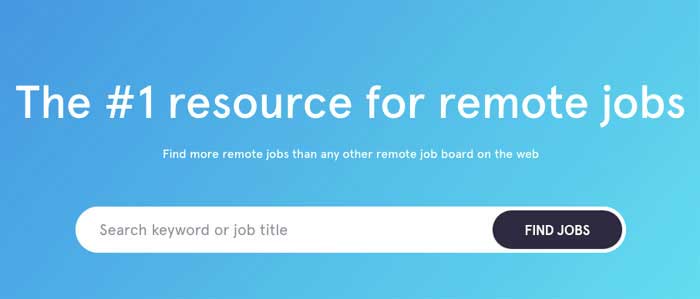The digital economy has matured into a sophisticated ecosystem where individuals can create, manage, and grow businesses from virtually anywhere in the world. What was once considered a side hustle has now become a primary source of income for millions of freelancers, entrepreneurs, and remote workers. With a laptop, an internet connection, and the right set of skills, people are no longer bound by geographic limitations, traditional office spaces, or rigid employment structures. Instead, they are empowered to access global markets, collaborate across continents, and monetize their creativity and expertise in ways unimaginable just a decade ago.
For readers of creatework.com, the idea of earning money from home is not just about convenience; it is about reshaping lifestyle, financial independence, and professional growth. The focus here is not on "get-rich-quick" schemes, but on sustainable methods to build multiple income streams using modern tools, platforms, and strategies. Whether it involves freelancing, starting a digital business, monetizing creative assets, or leveraging remote employment opportunities, the laptop has become the centerpiece of a new era of work.
The Rise of the Laptop Worker
The evolution of remote work has paved the way for a broad spectrum of income opportunities. Global freelancing platforms like Upwork, Fiverr, and Toptal have connected professionals with clients worldwide, enabling individuals to sell their expertise without leaving their homes. Similarly, remote-friendly companies such as GitLab, Shopify, and Basecamp have demonstrated that distributed teams can outperform traditional office-based ones when equipped with the right tools.
According to World Economic Forum projections, by 2030 nearly 800 million jobs may be automated, but millions of new opportunities are simultaneously being created in digital-first industries. This means that individuals who adapt early to online business models stand to benefit the most. A laptop is no longer a passive consumption device; it is a portable office, a marketplace, a creative studio, and in many ways, a passport to global employment.
Explore more about remote work opportunities.
🚀 Laptop Income Roadmap
Your journey to earning from anywhere
🎯 Choose Your Path
Start with freelancing, remote work, or online business
🛠️ Build Your Skills
Develop market-ready capabilities and portfolio
🌐 Get Online Presence
Create profiles on key platforms and start networking
💼 Start Earning
Land your first clients or job and deliver quality work
📈 Scale & Optimize
Use productivity tools and increase your rates
💰 Multiple Streams
Diversify income with multiple revenue sources
🌍 Go Global
Access international markets and embrace remote lifestyle
Click on any milestone to expand details
Freelancing: Turning Skills into Steady Income
Freelancing remains one of the most direct and proven methods for earning money from home. Professionals with skills in writing, design, software development, marketing, or consulting can start small and grow into highly profitable ventures. What sets freelancing apart is the ability to choose projects, clients, and schedules while still maintaining a sustainable income.
Key Areas for Freelance Success
Content Creation: Businesses constantly need articles, blogs, and white papers to fuel content marketing. Skilled writers with SEO knowledge are in high demand.
Design and Branding: From logos to website interfaces, visual storytelling continues to play a major role in business identity.
Technology and Development: Coders and developers often secure long-term contracts, particularly in areas like mobile apps, AI integration, and cybersecurity.
Marketing and Ads: Paid advertising experts who can manage Google Ads or Meta campaigns have become indispensable to small and mid-sized businesses.
Platforms such as LinkedIn ProFinder and Contra are now catering to professionals who want more premium and direct relationships with clients, moving beyond gig-style marketplaces. By combining consistent delivery with personal branding strategies, freelancers can earn far beyond the average salary offered in traditional employment.
Learn how freelancers are redefining employment.
Building an Online Business from Scratch
For those with entrepreneurial aspirations, a laptop can serve as the launchpad for building an online business. Unlike the brick-and-mortar model, digital ventures require significantly less startup capital while allowing scalability across international markets.
E-commerce and Dropshipping
E-commerce continues to thrive, with platforms like Shopify, WooCommerce, and Etsy enabling individuals to set up online stores within hours. Dropshipping, while competitive, allows entrepreneurs to sell products without holding inventory, making it an attractive model for beginners who want to avoid large upfront investments. Success in this space depends on identifying niche markets, leveraging social media advertising, and creating memorable customer experiences.
Digital Products
Digital goods such as e-books, online courses, and software tools are another rapidly growing segment. Once created, they can generate passive income with minimal overhead. Websites like Gumroad and Teachable have streamlined the process for creators to package and distribute knowledge.
Affiliate Marketing
Affiliate marketing has become a powerful method to monetize content-driven websites or social media channels. By recommending products and earning commissions from sales, individuals can scale earnings without directly handling transactions. Companies like Amazon Associates and Impact Radius provide accessible entry points into this model.
See more about business startups powered by laptops.
Creative Monetization: Turning Talents into Revenue Streams
While freelancing and online businesses remain primary avenues, creative monetization is another powerful way to use a laptop to generate income from home. This is especially relevant in 2025, as the global creator economy has reached new heights, with millions of individuals monetizing their passions through digital platforms. For many, the laptop acts as both a creative studio and a distribution hub.
Content Creation on Video Platforms
Platforms such as YouTube, Twitch, and TikTok have transformed entertainment and education into viable business models. With a laptop, individuals can edit high-quality videos, manage live streams, and analyze engagement metrics. Monetization comes from ad revenue, sponsorships, affiliate marketing, and subscription-based communities. For creators who focus on niche areas—such as finance tips, sustainable living, or remote work guidance—the opportunities for building a loyal following and stable income are immense.
Blogging and Newsletter Publishing
Blogging has evolved beyond personal journaling into professional media ventures. Running a blog with affiliate links, sponsored posts, or premium memberships can yield significant earnings. Coupled with platforms like Substack or Beehiiv, newsletters are making a comeback as trusted, community-driven sources of insight. Professionals who share expertise in areas like business, technology, or lifestyle can transform a laptop into a publishing powerhouse.
Discover how creative professionals build online careers.
Selling Creative Assets
Photographers, musicians, designers, and writers can leverage marketplaces like Adobe Stock, Bandcamp, and Envato to sell their creative work. These assets can be licensed repeatedly, creating semi-passive income. The rise of AI-assisted tools has also made it easier for creatives to experiment, prototype, and market faster, though originality remains a vital differentiator.
Remote Employment: The Evolution of the Global Job Market
Not everyone wants to start a business or become a freelancer. For many professionals, remote employment offers the balance of steady income with the flexibility of working from home. The pandemic-era boom in distributed work has permanently altered corporate structures. By 2025, hybrid and remote-first models are not the exception but the norm across industries.
Accessing Global Opportunities
With platforms like We Work Remotely, FlexJobs, and RemoteOK, professionals from Europe, Asia, or Africa can now compete for roles once reserved for candidates based in the United States or United Kingdom. Companies like Microsoft, Spotify, and Shopify actively embrace global hiring practices, ensuring diverse teams and access to specialized skill sets.
In-Demand Remote Roles
Certain job categories have seen consistent growth:
Software Development and IT Support: Cloud computing, cybersecurity, and AI deployment remain high-demand fields.
Digital Marketing and SEO: Companies are scaling globally, and visibility in online search and social platforms is more valuable than ever.
Customer Success and Support: As more businesses digitize, the demand for virtual customer care continues to rise.
Education and Training: Online tutoring, course development, and virtual training roles are flourishing worldwide.
Remote employment provides long-term stability for individuals who prefer the security of a company paycheck while still enjoying the autonomy of working from anywhere.
Explore employment opportunities in remote work.
Smart Money Management for Laptop Earners
Earning more money from home is only half of the equation; effectively managing that money is what transforms short-term income into long-term wealth. Laptop earners must embrace modern digital finance tools to save, invest, and grow their earnings strategically.
Personal Finance Tools
Platforms like Mint, YNAB (You Need a Budget), and Revolut make it possible to track expenses, categorize spending, and automate savings goals. These tools provide a real-time understanding of where money goes, making budgeting less of a chore and more of a strategy for independence.
Investing from Home
Laptop-based investors are no longer limited to local stock exchanges. With apps like Robinhood, eToro, and Interactive Brokers, individuals can access U.S., European, and Asian markets seamlessly. Cryptocurrency exchanges such as Coinbase and Binance also remain popular, though users are increasingly cautious about security and regulations.
Building Passive Income through Investments
Investing in dividend-paying stocks, real estate crowdfunding platforms like Fundrise, or peer-to-peer lending systems provides ongoing returns. While these avenues require careful research, the ability to manage an entire portfolio from a laptop makes global investing more accessible than ever before.
See financial tips for modern professionals.
Productivity Tools: Maximizing Efficiency
Making money from home requires not just effort, but also discipline and structure. Productivity tools designed for freelancers, entrepreneurs, and remote workers play a vital role in sustaining income.
Task and Project Management
Applications like Asana, Trello, and Notion allow workers to organize projects, set deadlines, and collaborate with global clients. These tools help streamline workflows and reduce wasted time.
Communication and Collaboration
Platforms such as Slack, Zoom, and Microsoft Teams keep remote teams connected. Effective communication is critical for freelancers managing multiple clients or employees coordinating across continents.
Automation and AI Integration
In 2025, AI-powered productivity tools are indispensable. From chatbots that handle customer service to platforms like Zapier that automate repetitive workflows, leveraging automation frees up time to focus on higher-value tasks. For content creators, AI tools assist with brainstorming, editing, and optimization, helping them scale faster without compromising quality.
Read more about AI and automation in business.Learn about productivity tools for modern workers.
Designing a Laptop-Based Lifestyle
Making money from home using just a laptop is not only a financial shift—it is a lifestyle transformation. By 2025, digital professionals increasingly design their lives around the flexibility and freedom this work style offers. For many, the decision to work from home or become location-independent is tied to deeper values: freedom of movement, personal well-being, family priorities, and the ability to pursue passions while maintaining income stability.
The Rise of Digital Nomadism
Digital nomadism, once considered a fringe movement, is now mainstream. Cities such as Lisbon, Bali, Chiang Mai, and Barcelona have become hubs for remote workers who blend professional obligations with cultural exploration. Governments are responding by introducing digital nomad visas in countries including Spain, Portugal, Thailand, and Estonia, encouraging foreign workers to settle temporarily and contribute to local economies.
This lifestyle allows professionals to adapt their environment to their creativity and productivity needs. With a laptop, one can attend a meeting in the morning, explore a new country in the afternoon, and finish a client project by evening. The model breaks away from traditional constraints and emphasizes the value of experience alongside work.
Learn more about lifestyle design for professionals.
Balancing Work and Well-being
The shift to laptop-based work has placed a spotlight on wellness. With the risk of burnout and blurred work-life boundaries, professionals are actively adopting strategies to maintain balance. This includes setting clear schedules, integrating physical exercise, and leveraging productivity apps that promote mindful work habits.
Moreover, coworking spaces designed specifically for digital professionals are flourishing worldwide, offering structured environments, networking opportunities, and community support. For many freelancers and entrepreneurs, these spaces serve as a hybrid solution—blending the independence of working remotely with the social benefits of traditional offices.
The Global Perspective on Laptop Earning
The ability to earn from a laptop is not limited to one region. It is a global phenomenon, but the opportunities differ based on infrastructure, local markets, and government policies.
United States and Canada
The U.S. remains a global leader in remote work opportunities due to its diverse economy, advanced digital infrastructure, and concentration of global corporations. Canadian professionals are equally well-positioned, with the country actively encouraging hybrid and remote models. Both markets are fertile ground for freelancers in software, content, and marketing.
Europe
Countries like Germany, Sweden, and Netherlands are at the forefront of digital transformation, with governments incentivizing innovation and providing strong social safety nets. United Kingdom freelancers thrive in industries such as finance, consulting, and creative services, often leveraging global demand to supplement domestic projects. Southern Europe—Spain, Italy, and Portugal—attracts digital nomads due to lifestyle appeal, affordable living costs, and new visa schemes.
Asia-Pacific
Singapore, South Korea, and Japan are hubs for high-tech industries and remote employment opportunities. Meanwhile, countries like Thailand and Indonesia (particularly Bali) continue to be hotspots for digital nomads seeking affordable living while serving clients worldwide.
Africa and South America
Emerging markets in South Africa, Brazil, and Colombia are gaining attention as more professionals harness laptops to deliver services abroad. These regions face challenges with infrastructure in some areas, but the cost of living advantages and growing startup ecosystems make them attractive to remote workers.
Explore economic perspectives across regions.
Future-Proofing Skills for Continued Growth
While opportunities are abundant, the sustainability of laptop-based income depends on continuous learning and adaptation. In 2025, upskilling has become a professional necessity rather than an option.
Areas of Growth
Artificial Intelligence and Automation: Mastery of AI tools, from machine learning applications to AI-driven marketing, provides a competitive edge.
Cybersecurity: As remote work expands, demand for digital security expertise grows across all industries.
Data Analysis: Professionals who can interpret complex datasets to inform business strategies are in high demand.
Creative and Human-Centric Skills: While technology evolves, human creativity, storytelling, and emotional intelligence remain irreplaceable.
Accessible Upskilling Platforms
Platforms like Coursera, edX, and Udemy offer affordable ways to build new capabilities. Corporate-backed initiatives, such as Google Career Certificates and LinkedIn Learning, provide structured paths into growing industries. For freelancers, this adaptability ensures continued relevance and higher income potential.
Read more about upskilling opportunities.See technology trends shaping the future of work.
The Business of Multiple Income Streams
One of the most powerful aspects of working from home with a laptop is the ability to combine different income models. Professionals are increasingly diversifying to reduce risk and build resilience against market shifts.
For example, a content creator may run a monetized YouTube channel, offer freelance consulting services, and sell a digital product simultaneously. Similarly, a remote employee may invest part of their salary into an e-commerce side project. The laptop becomes a multi-channel income generator, blurring the lines between employment, entrepreneurship, and creative work.




